Round House
Wilton, Connecticut
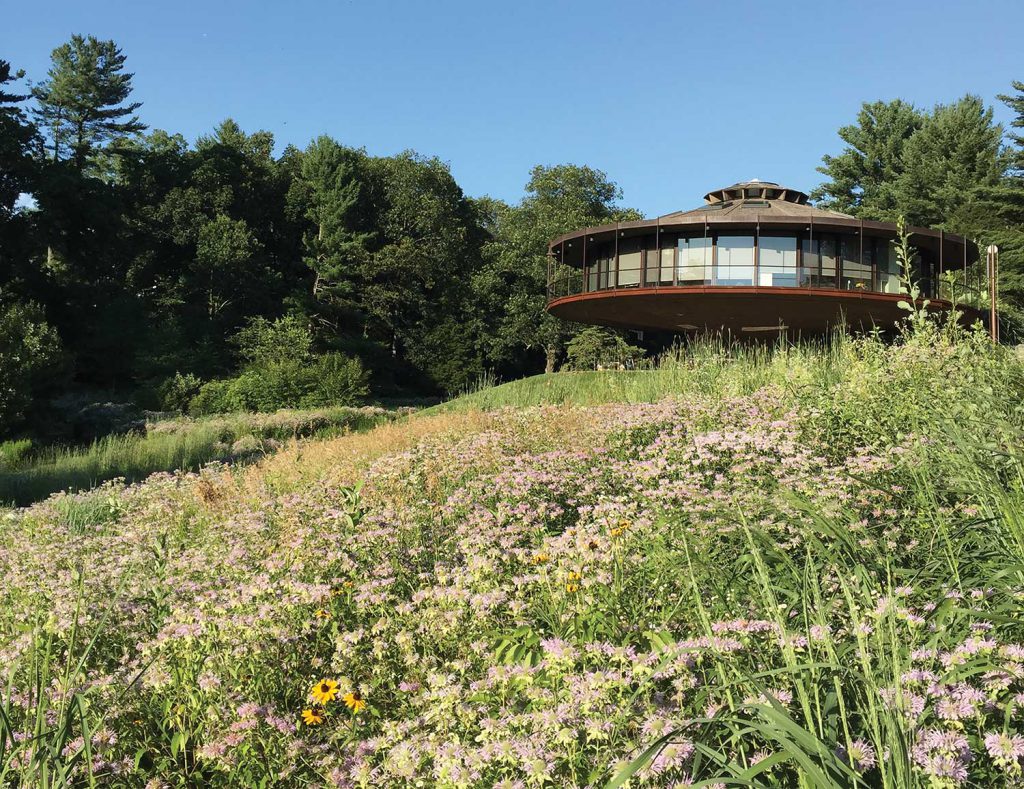
“Ross! Ross!” Rea David called to her pet rooster in the chicken pen just down the slope from her house—and Ross immediately crowed an answer. A small flock of hens joined in, clucking happily at the sound of her voice. The house David called from, though, is no ordinary farmhouse. A perfectly circular steel-and-glass structure, the Round House sits on a pedestal, a mushroom-shaped form perched at the upper edge of a sloping, amphitheater-like site—an icon of midcentury modernism in the suburbs of Wilton, Connecticut. And David is no ordinary client. With a background in art, married to the art and architecture critic Judd Tully, David has an eye for beauty—in art, architecture, and nature. She loves not only plants but many other living things, from the chickens she cares for to the birds, butterflies, and bees that now flit through the six acres surrounding the distinctive home. “What I find most satisfying about living here,” she confides, “are the panoramic views that provide intimate and instant access to the nature surrounding our home—the sights and sounds, from the frogs in the pond to the birds playing in the aspen and sumac, racing through the meadows.” As the landscape architect Jens Jensen wrote in Siftings: “Clients are of all sorts. Those with a real understanding of landscaping are very, very few. Some know too much, or have an idea they do, and they are better left alone. Then there are those who want a garden because their neighbor has one, and I am afraid these are in the majority. But there are the few who have a love for growing things.”
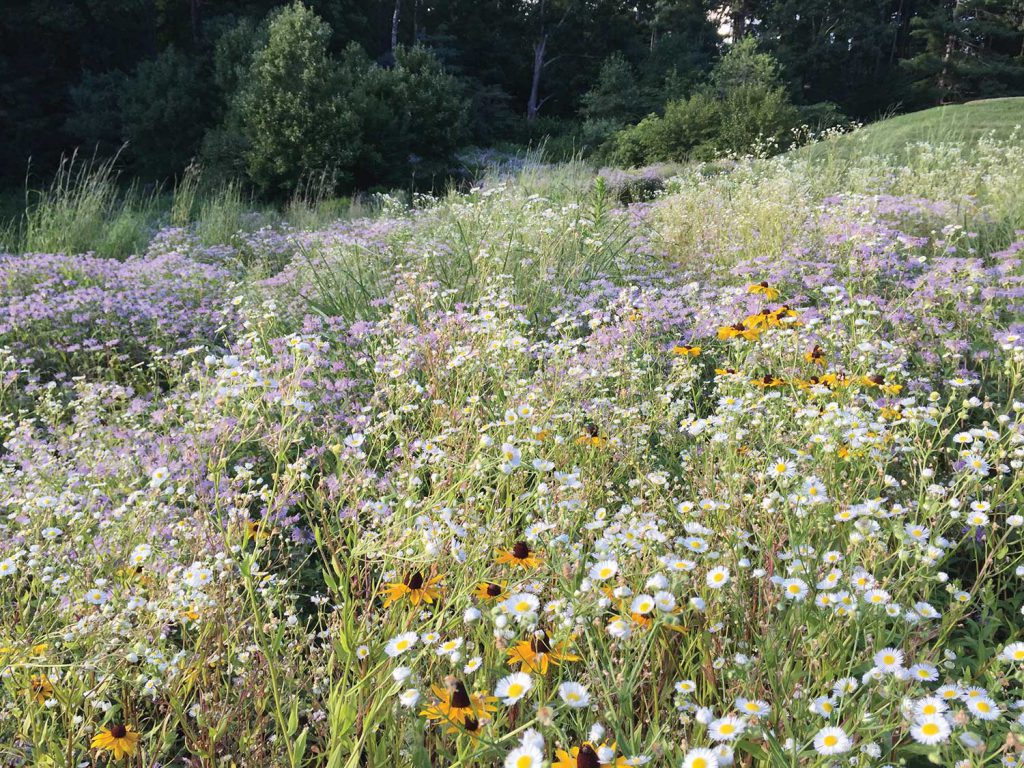
Designed by the architect Richard Foster, the Round House was completed in 1968 and featured in Architectural Record almost immediately. After having worked with Philip Johnson for a few years, Foster founded his own firm in 1962 and went on to design many notable projects, including the Round House, where he lived with his family until his death in 2002. Among its many unusual attributes is its capacity to revolve in either direction at the turn of a switch. Shortly after David and Tully purchased the house in 2012, they commissioned Mack Scogin Merrill Elam Architects to reconfigure the interior with the goal of maximizing views to the outdoors. But as the neighborhood had become increasingly suburban, bucolic views of old fields had gradually been supplanted by manicured lawns. This is the landscape I saw when David and Tully contacted me in 2014 about a commission to design a new setting for their home.
One of our first projects in the effort to “re-wild” the site was to replace an acre-plus expanse of turfgrass with an eastern meadow, the new panoramic view from the reconfigured interior. I envisioned purple lovegrass, Canada wildrye, and little bluestem on the upper slope; little bluestem, purpletop, and Indiangrass in the midsection; then a mix of Indiangrass, big bluestem, and switchgrass in the lower, moister segment. I hand-broadcast drifts of quick-growing beebalm and black-eyed Susan as well as an overlay of slower-to-establish forbs matched with the moisture level.
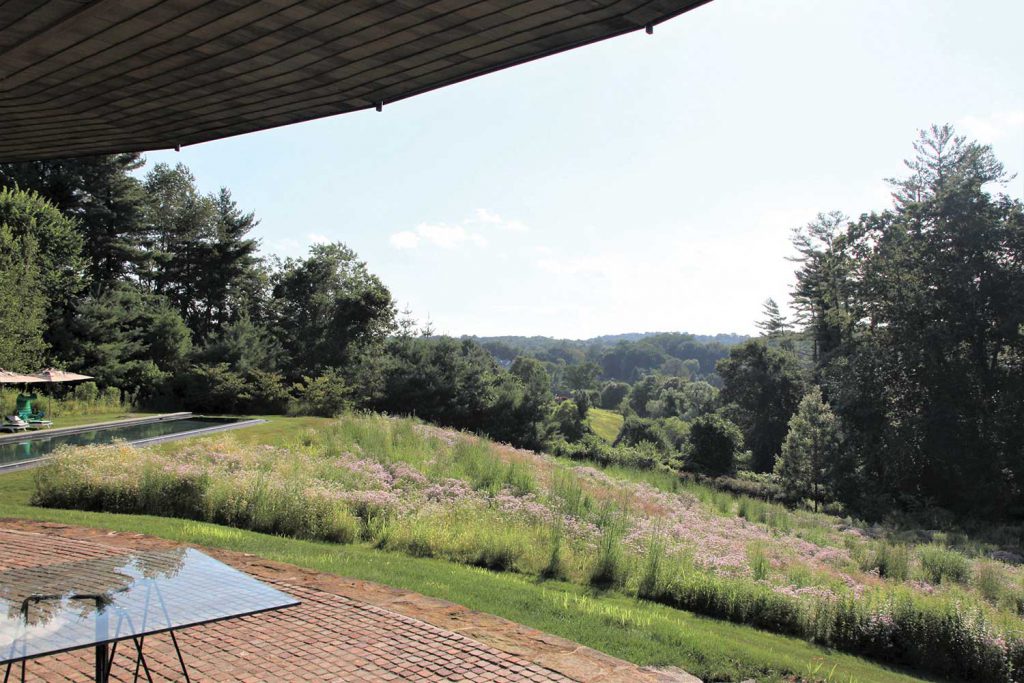
Since then David and I have collaborated on several other garden projects on the property. At the pond edge, we planted blue flag iris, cardinal flower, blue lobelia, swamp milkweed, cinnamon and sensitive ferns, rushes, and sedges. We developed a rock garden with boulders discovered on the site and relocated into a slope ranging from full sun to part shade. There we planted purple lovegrass, sundrops, blue-eyed grass, wild strawberry, butterfly weed, prairie phlox, woodland phlox, and Pennsylvania sedge. Close to the house, on a rocky dry slope with a hot southwestern exposure, we planted purple lovegrass, little bluestem, butterfly weed, harebell, and even prickly pear cactus. For a moist woodland setting, we chose gray birch and dwarf bush honeysuckle, as well as lady fern, Christmas fern, Pennsylvania sedge, Jacob’s ladder, wild columbine, wild geranium, woodland phlox, and ragwort. Throughout the process, David has supported bold moves, such as a switchgrass “hedge” that billows along each side of the narrow driveway, and a grove of trembling aspen and staghorn sumac on a rocky bank just outside the house. The trees have grown to the height of the second story, where you can hear the aspen leaves as they tremble in the breeze and, in the fall, see the orange and scarlet of sumac and the yellow-golden foliage of the quaking aspen at eye level.
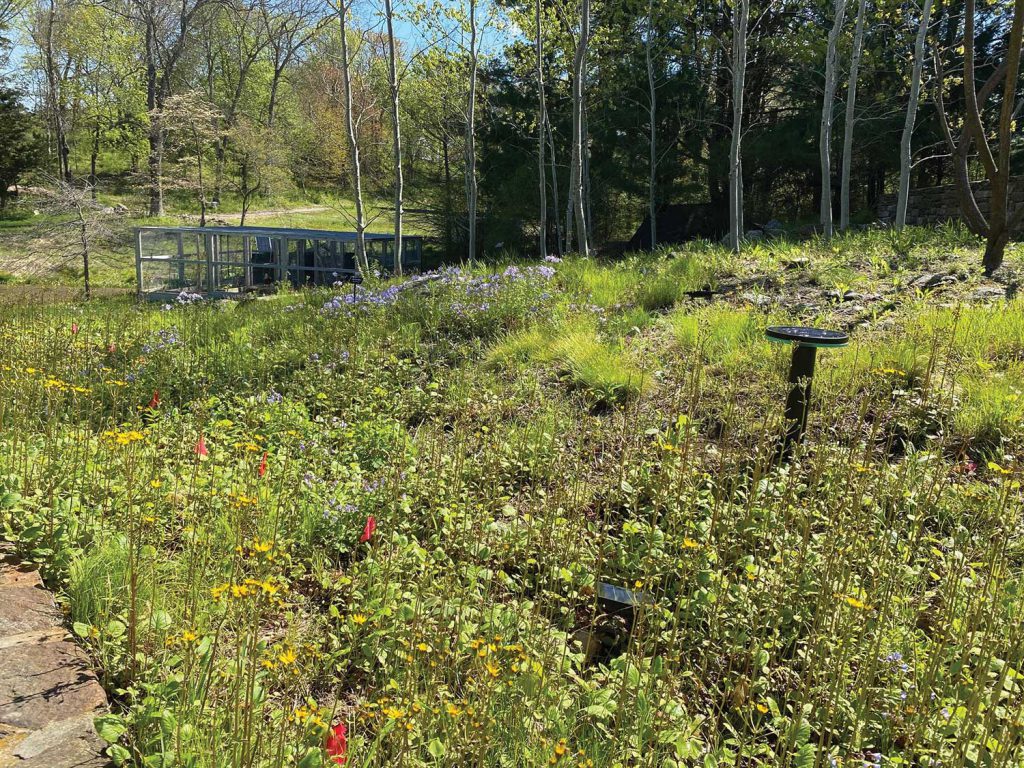
In 2016, David and Tully acquired an additional two-acre plot to the east of the original Round House lot. We removed trees growing along the property line, and now the space flows uninterrupted between the original lot and the adjacent one, which was already in a semi-wild state. An annual mowing program has revealed a traditional straight, dry-laid stone wall, a remnant and reminder of an agricultural past. A zone of aging forest occupies the southern section of the site. From the edge, a new cluster of fifty young early-successional trembling aspen emerges into the open field. Under the old forest canopy, we planted twenty-five shade-tolerant American beech saplings. One day, they will become a part of the canopy, and their horizontal branches will retain their copper-turning-to-tan leaves through the winter.
David and I typically meet each winter and plan a program for the next spring’s planting, always with an eye toward increasing diversity, which leads to greater resilience—and, yes, more beauty in the landscape. An active participant in both the planning and the carrying out, David places the order and lines up a crew. In May, I place color-coded flags marking where drifts will go. David is always there, planting alongside the crew—together they have put in hundreds of plants over many years.
Neither of us likes cultivars of native species, largely because we believe that we can’t really improve on what was growing here long before we arrived. On one occasion, I recommended planting some elderberry shrubs in a moist area adjacent to the pond, and when the nursery delivered a variegated cultivar, David immediately returned them and located others of the species. At times, we have had to settle for cultivars, but you can be sure that there will be no orange-flowered purple coneflowers or other such aberrations in the Round House landscape. And although some lawn remains, there are no chemicals used in its management. Weed species in the various garden areas are not poisoned but are cut or pulled, and overseeding or infilling with additional plants provides competition for unwanted species.
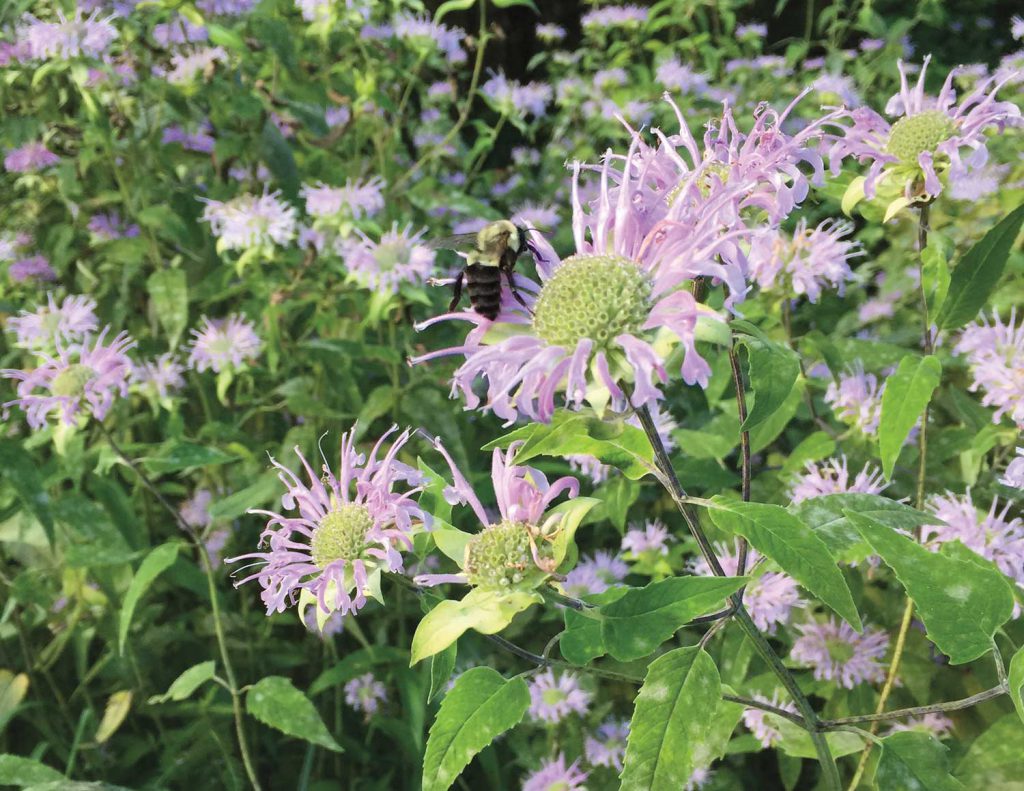
At the end of our most recent planting day, the two of us sat on the terrace under the house, cool drinks in hand, looking out over the ever-changing landscape. Surrounded by dozens of plants on the slope in front of us, alive with butterflies and bumblebees, we mused that the Round House, now more than a half century old, still seems futuristic, floating above the landscape like a flying saucer. And we agreed that the landscape, in its way, is forward-looking too.
In seeking to reintroduce native species and beauty from an earlier era, this landscape is way ahead of the conventional, late-twentieth-century landscapes that surround it—those outdated designs that are so dependent on chemicals, irrigation, and fossil fuels to keep them in a controlled, manicured, unchanging state. The Round House is a living, evolving demonstration of the abundance of life we can have in the landscape, even if it is only a quarter acre or a rooftop planting area. There is sometimes a misperception that to adopt an ecological approach in designing our landscapes is somehow to deprive ourselves. But to Rea David, who loves growing things, who loves life, there is a feast out there. It’s a win-win: doing what is good for the earth and what is good for birds, butterflies, and bumblebees is good for us, too.
Learn more about Darrel Morrison’s life and work in Beauty of the Wild.